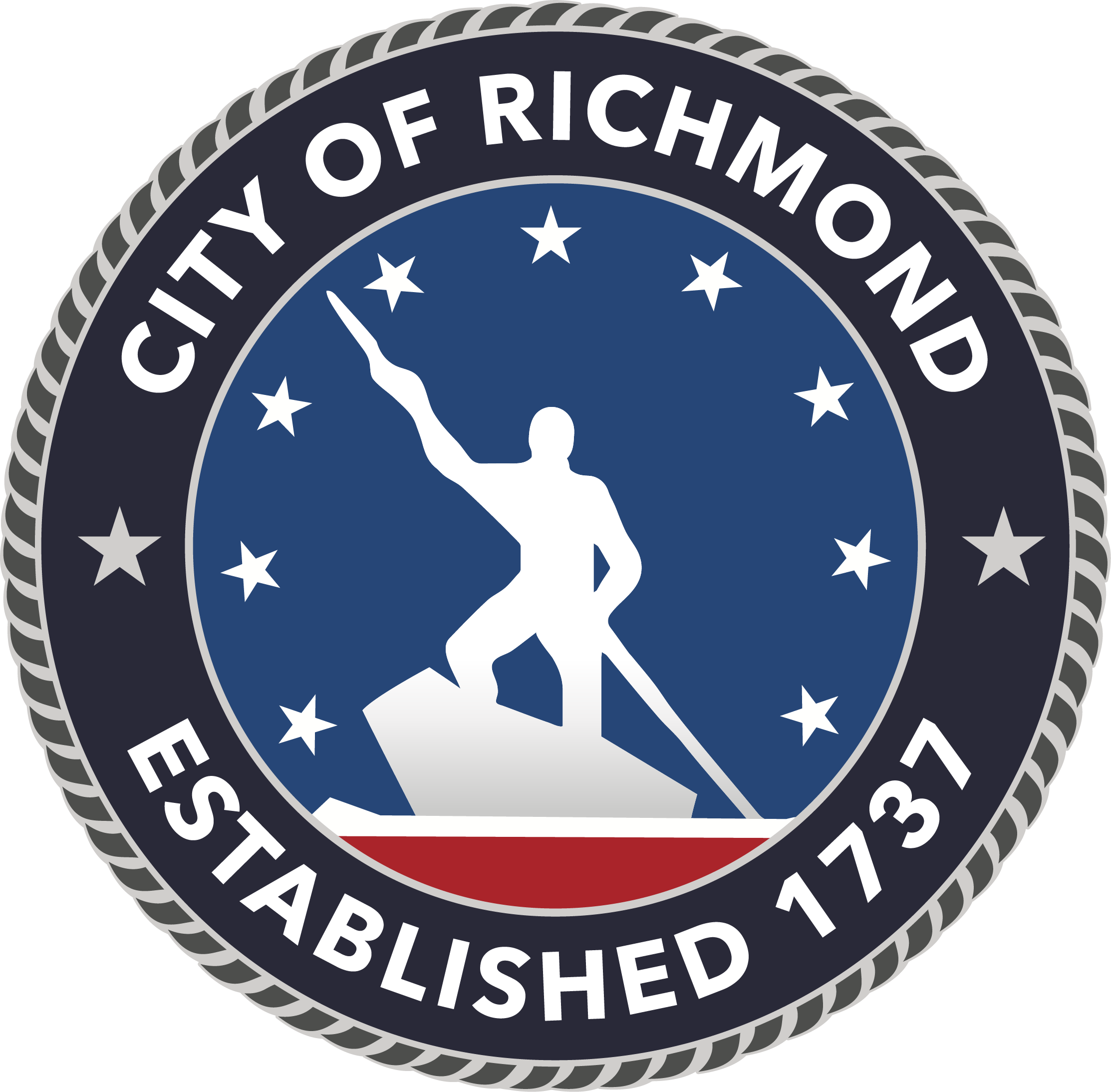Click here to view the map that identifies the material of water service lines.
Click here to start the survey.
Click here for survey instructions.
Click here if you need plumber assistance.
Water Utility
Richmond's Water Treatment Plant was built on the banks of the James River in 1924. Before then, more than 300 years ago, Richmond's drinking water came from numerous springs and an open stream flowing from the Capitol across Main Street. Over the years the plant has been upgraded and enlarged to meet growing demand.
Today, Richmond's Department of Public Utilities' (DPU) water plant can produce up to 132 million gallons per day (MGD). DPU also provides water to Henrico, Chesterfield, Hanover, Goochland and Powhatan counties through wholesale contracts. Details are outlined in the current water plan.
DPU has invested millions of dollars to ensure it always meets or exceeds federal regulations as well as the increasing regional demands for reliable, high-quality drinking water. Water utility employees perform numerous water tests every day and maintain more than 1,000 miles of water lines so that when you turn on the tap, your family will receive water that is clean and safe.
Explore the video to discover how clean and safe water is delivered to you.
The City of Richmond Department of Public Utilities is a member of the American Water Works Association, the American Water Works Association Research Foundation, and the Association of Metropolitan Water Agencies. These organizations are dedicated to furthering knowledge and research on safe drinking water.
Drinking water, including bottled water, may reasonably be expected to contain at least small amounts of some substances. The presence of substances does not necessarily indicate that the water poses a health risk.
More information about substances and potential health effects may be obtained by calling the Environmental Protection Agency ’s (EPA) Safe Drinking Water Hotline at (800) 426-4791.
Health Information
Some people may be more vulnerable to certain substances in drinking water than the general population. Immuno-compromised people - such as those with cancer who are undergoing chemotherapy, those who have undergone organ transplants, those with HIV/AIDS or other immune system disorders, and some elderly people and infants - can be particularly at risk from infections. These people should seek advice from their health care providers about drinking water. EPA/CDC (Centers for Disease Control) guidelines on appropriate means to lessen the risk of infection by Cryptosporidium and other microbial substances are available from the Safe Drinking Water Hotline at (800) 426-4791.
Why We Report on Water Quality
The 1996 Safe Drinking Water Act requires water utilities to provide consumers with a yearly report on the source and quality of the water they drink. You may also find our Water Quality Reports on this page.
The state allows us to monitor for some substances less than once per year because the concentrations of these substances do not change frequently.
The Virginia Department of Health conducted a source water assessment of our system during 2002. The Richmond Water Treatment Plant was determined to be of high susceptibility to contamination, using criteria developed by the state in its EPA-approved Source Water Assessment Program. The assessment report consists of maps showing the source water assessment area, an inventory of known land use activities of concern, and documentation of any known contamination within the last five years from the date of assessment. This report is available by contacting the Department of Public Utilities at (804) 646-8701.
Inside the Water Quality Report
The water quality report is a snapshot of the city’s drinking water quality over the past year. Included is information about your water, what it contains and how it compares with standards mandated by the U.S. Environmental Protection Agency (EPA) and the Virginia Department of Health. This report is being provided to comply with the 1996 Safe Drinking Water Act. Landlords, businesses and other property owners are encouraged to share this drinking water quality report with tenants.
For free additional copies or more information about your water and this report, call the City of Richmond Department of Public Utilities at (804) 646-7306.
Water Quality Report - PDF Format
2024 Drinking Water Quality Report
2023 Drinking Water Quality Report
2022 Drinking Water Quality Report
2021 Drinking Water Quality Report
2020 Drinking Water Quality Report
Substances Expected to be in Drinking Water
Drinking water, including bottled water, may reasonably be expected to contain at least small amounts of some substances. The presence of substances does not necessarily indicate that the water poses a health risk. More information about substances and potential health effects may be obtained by calling the Environmental Protection Agency's (EPA) Safe Drinking Water Hotline at (800) 426-4791.
As water travels over land or through the ground, it dissolves naturally occurring minerals and, in some cases, radioactive material. Water can pick up substances resulting from the presence of animals or human activity. Substances that may be present in source water include:
- Microbial substances such as viruses and bacteria, which may come from domestic animals, wildlife, septic systems, livestock and sewage treatment plants.
- Inorganic substances such as salts and metals, which can be naturally occurring or result from urban stormwater runoff, industrial or domestic wastewater discharges, oil and gas production, mining or farming.
- Pesticides and herbicides, which may come from a variety of sources such as agriculture, urban stormwater runoff and residential uses.
- Organic chemicals, including synthetic and volatile organic chemicals, which are byproducts of industrial processes and petroleum production, and can come from gas stations, urban stormwater runoff and septic systems.
- Radioactive substances, which can be naturally occurring or be the result of oil and gas production and mining activities.
Water treatment significantly reduces the level of these substances in drinking water. In order to ensure that tap water is safe to drink, Environmental Protection Agency (EPA) regulations limit the amount of certain substances in water provided by public water systems. Food and Drug Administration (FDA) regulations establish limits for substances in bottled water, which must provide the same protection for public health.
Lead
If present, elevated levels of lead can cause serious health problems, especially for pregnant women and young children. Lead in drinking water is primarily from materials and components associated with service lines and home plumbing. The City of Richmond is responsible for providing high quality drinking water, but cannot control the variety of materials used in plumbing components. When your water has been sitting for several hours, you can minimize the potential for lead exposure by flushing your tap for 15-30 seconds or until it becomes cold or reaches a steady temperature before using water for cooking or drinking.
If you are concerned about lead in your water, you may wish to have your water tested. Information on lead in drinking water, testing materials, and steps you can take to minimize exposure is available from the Drinking Water Hotline.
Cryptosporidium
Crytosporidium is a microbial parasite found in surface water throughout the United States. We collected seven samples in 2017 and found an average of 5.4 Oocysts/100L. This is less than the Action Level of 7.5 Oocysts/100L.
For More Information
Contact the City of Richmond Department of Public Utilities at (804) 646-4646 for additional copies of the Water Quality Report. For more information about Richmond’s water quality, call (804) 646-8701.
For general information about drinking water, visit the U.S. Environmental Protection Agency's website or call the EPA at (800) 426-4791. You may also refer to the Virginia Department of Health.
Protecting public health and safety is at the heart of the mission for the City of Richmond. Richmond’s drinking water is safe, clean, and reliable and the Department of Public Utilities works around the clock to ensure this commitment is kept. The City’s Lead Free Water Program focuses on both the public and private sides of water service lines. Click here to visit that program's page.
Water Conservation Tips (courtesy of Virginia Department of Health)
Top Ten Water Wasters at Home and What You Can Do About Them*
- Check your home plumbing for leaks. A leaky faucet or toilet can waste thousands of gallons per year.
- Install water-saving showerheads and faucet aerators, available at your hardware store, if you don’t already have them in place. A shower can use up to 7 gallons of water per minute. Don’t let the shower run too long while waiting for it to warm up or while soaping up.
- Sweep, don’t wash, sidewalks and driveways. Instead of using a hose, use a broom or leaf blower, and save 3-5 gallons of water per minute.
- If you need to water your lawn, do it every other day in the early morning hours. This will minimize evaporation and increase water penetration.
- When you have to replace a water-using appliance, be sure to install a water-efficient model.
- Landscape with plants that require little water and mulch around ornamental plantings to conserve moisture.
- Turn off the tap while brushing your teeth. You probably only need the water in three short bursts – to rinse your toothbrush initially, to rinse it after use, and to rinse your mouth.
- Flush only when needed. Don’t use the toilet as a wastebasket.
- Install a shut-off nozzle at the end of your hose. Use only the water needed for outdoor tasks, such as washing your car.
- Only use dishwashers and washing machines when you have a full load. Water-saving models will allow you to adjust the washer’s water level.
****** BONUS TIP ******
Keep a container of drinking water in the refrigerator. This will save running the tap while waiting for the water to cool. For good health, don’t scrimp on hand washing or washing fresh vegetables.
* If your area has water restrictions, car washing, lawn watering or other activities may be limited.







